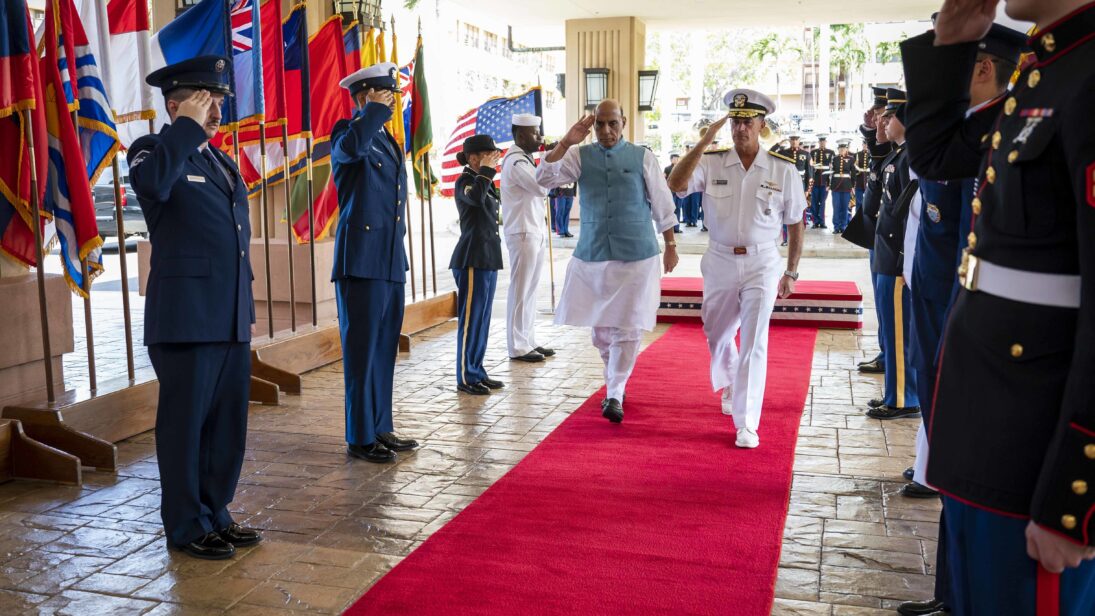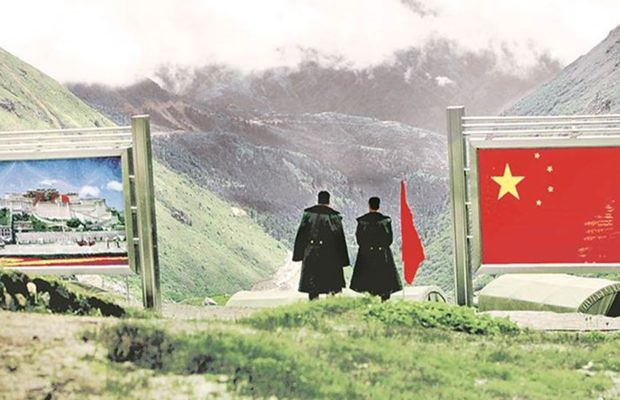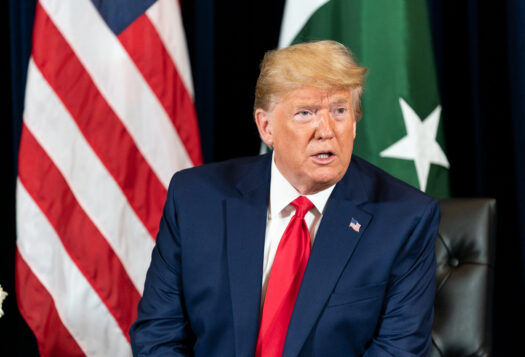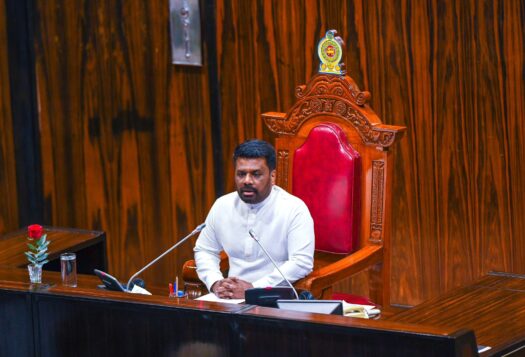
In mid-February, a month after the Taiwanese presidential and parliamentary elections, India and Taiwan signed a memorandum of understanding (MoU) on migration and mobility, which garnered controversial headlines and had the makings of a diplomatic fracas. On the surface, the pact is largely uncontroversial, with both sides benefiting without crossing diplomatic red lines: India’s surfeit of global migrant workers can help Taiwan’s labor shortage woes amid an aging population while easing India’s employment problems. Yet the potential for deeper exchanges between India and Taiwan has seemingly unnerved China.
Last year, after a report publicized some details on the potential recruitment of up to 100,000 Indian workers by Taiwan, a frenzy of racist attacks on social media forced the Taiwanese government to intercede. Taiwan’s Labor Minister Hsu Ming-chun alleged Chinese interference, calling the social media posts a form of “cognitive warfare,” and even denied some reported claims as “false information.”
That the MoU was only signed after Lai Ching-te, the candidate of the ruling Democratic Progressive Party (DPP), won Taiwan’s 2024 presidential election highlights that the DPP’s third consecutive win has strengthened India’s and Taiwan’s intent to give impetus to their continuing strategic cooperation. By the same token, it will also sharpen escalation with Beijing. India and Taiwan will expect China to use coercive, misleading means, including intimidation tactics, to disrupt any constructive mechanisms; both sides understand the need to counter such moves deftly, as the aforementioned incident clearly highlighted.
India and Taiwan will expect China to use coercive, misleading means, including intimidation tactics, to disrupt any constructive mechanisms; both sides understand the need to counter such moves deftly.
Taking the growing bilateral relationship into account, and in view of the ongoing tensions in the Indo-Pacific maritime arena, including in the Taiwan Strait, the Indian Ocean region (IOR) and the South China Sea, it is critical to examine India’s evolution, or lack of it, in relation to the Taiwan question.
Would India remain silent or ambiguous in the case of a Taiwanese emergency? What are the possible ramifications? Can India’s Taiwan policy complement its regional strategy with like-minded partners, including the South China Sea littorals, to counter China? Is Indian Prime Minister Narendra Modi likely to compromise to avoid enraging Beijing or seek solidarity with the United States, the U.S. allies, and democratic Taiwan?
Shades of Change: From Strategic Ambiguity to Acknowledging “Democracy in Action”
Historically, India was one of the first countries to diplomatically recognize the People’s Republic of China (PRC). New Delhi continued to “abide by” the “one China” policy for years – until it stopped officially reiterating the manta during the last 15 years or so. The reasons have been primarily centered on China’s growing proximity with Pakistan; China’s provocative claim on the Indian state of Arunachal Pradesh; China’s increasing footprint in South Asia and the IOR; the India-China trade disparity; and, in recent years especially, India’s growing geopolitical profile and bonhomie with the United States and U.S. allies and partners in the Indo-Pacific, including Taiwan.
Taiwan started to gain economic traction in India after the launch of the “Look East Policy” in the 1990s, which led to the establishment of Taiwan’s and India’s representative offices (in Delhi and Taipei, respectively). Even so, a 2008 joint statement between India and China opposed “any activity that is against the one China principle,” without directly mentioning Taiwan. The updated and revised “Act East Policy” (AEP) under the Modi administration that expanded the scope of India’s Indo-Pacific interests, with a focus on Southeast Asia, did provide the potential for enhancing bilateral ties with Taiwan. However, India chose not to include Taiwan in its strategic policy outlook, a lack that was bemoaned by analysts.
With the Galwan conflict escalating the stakes for India’s security and the DPP’s Tsai Ing-wen diversifying Taiwan’s regional outreach with the “New Southbound Policy” (NSP), especially in her second term, the India-Taiwan strategic cooperation has been on the rise. The latest acknowledgment by India after the 2024 election about the success of Taiwan’s democratic process and highlighting the two democracies as being in a committed relationship has truly turned the tide. It will surely facilitate movement in favor of the emerging regional architecture with like-minded partners like Japan and the United States, which aims to counter China’s military and economic belligerence.

Multiplying Maritime Stakes: From IOR and the South China Sea to the Pacific Islands
Taiwan is not the sole focus of India’s diplomacy. India’s pointed, multialignment policy has aggressively extended its outreach in its traditional stronghold of the IOR (e.g., in Sri Lanka); among the South China Sea littorals and claimants like the Philippines and Vietnam; and the Pacific Island Countries (PICs) where Taiwan’s allies have been reducing, and China’s hold through financial clout has raised fears of increased regional instability. This is important in the face of a bolstered Chinese footprint particularly in the IOR for India. For example, recent events in the Maldives in favor of China and China’s progress in developing a Belt and Road Initiative (BRI) rail and port links through the Bay of Bengal (Myanmar) could be a setback to India and its Indo-Pacific partners. The psychological edge in this tug-of-war would have implications for the Taiwan Strait.
As regards the South China Sea, over 55 percent of India’s trade passes through the waterway. Therefore, India has amplified strategic cooperation including in oil, gas, and defense with the littoral states. Moreover, India has also asserted its stand against China on the South China Sea disputes, for example, by supporting the Philippines over the 2016 arbitral tribunal award that dismissed China’s claims on the disputed territorial waters in favor of the Philippines, in a recent turn of events.
In the PICs, Modi’s strong diplomatic overtures, especially via the Voice of Global South summits during India’s 2023 G-20 presidency and personal diplomacy, will strengthen the Quadrilateral Security Dialogue’s intent to counter China’s influence, be it via climate action programs or the digital connectivity project in Palau.
What India’s Changing Policy Could Mean in a Taiwan Contingency
It is futile to talk about a peaceful unification between Taiwan and mainland China, as even the potential for such talks is unlikely with the DPP in power. Neither the DPP nor the Xi regime will go for a negotiation in this matter as the stakes have become only higher with the increase in China-U.S. strategic competition and involvement of several Indo-Pacific actors like India and Japan in maintaining the rules-based international order.
New Delhi will not be as indifferent to the United States and its allies as it has been during the Russia-Ukraine war, where India does not face direct consequences.
In case of a forceful reunification attempt by China, India’s response would be limited. Not being an ally of Washington, India would be under no obligation to support a military counterattack. But certainly, China’s role as India’s rival-neighbor that constantly triggers the hostile border situation will be a factor in New Delhi’s approach. China will become a greater, more confident threat in the IOR, too, if Beijing makes gains in its pursuit of Taiwan unification or a related escalation in the East China Sea and the South China Sea on China’s terms. Therefore, all things considered, New Delhi will not be as indifferent to the United States and its allies as it has been during the Russia-Ukraine war, where India does not face direct consequences.
This was highlighted even during the height of the Ukraine war when the U.S. and its two allies in the Quad had serious differences with India over Russian support: The four were unanimous in their need to focus on their “core” interest regions, namely the Indo-Pacific. Even as the Taiwan question has not been “embraced” by the Quad, the inclusion of maritime security in the East and South China Seas in the “Spirit of the Quad” indicates that, if worse comes to worst, India will stand in solidarity with its Quad partners. That support is unlikely to come militarily but certainly will extend to diplomatic matters. In light of the recent developments with Taiwan even amid China’s hostile attempts to block progress, the India-Taiwan trajectory seems due for a timely course correction.
Editor’s Note: A version of this piece originally appeared on The Diplomat and has been republished with permission from the editors.
Also Read: The Quad Must Tackle Nuclear Threats in the Indo-Pacific
***
Image 1: U.S. Indo-Pacific Command via Flickr
Image 2: India-China Sikkim border via Flickr


